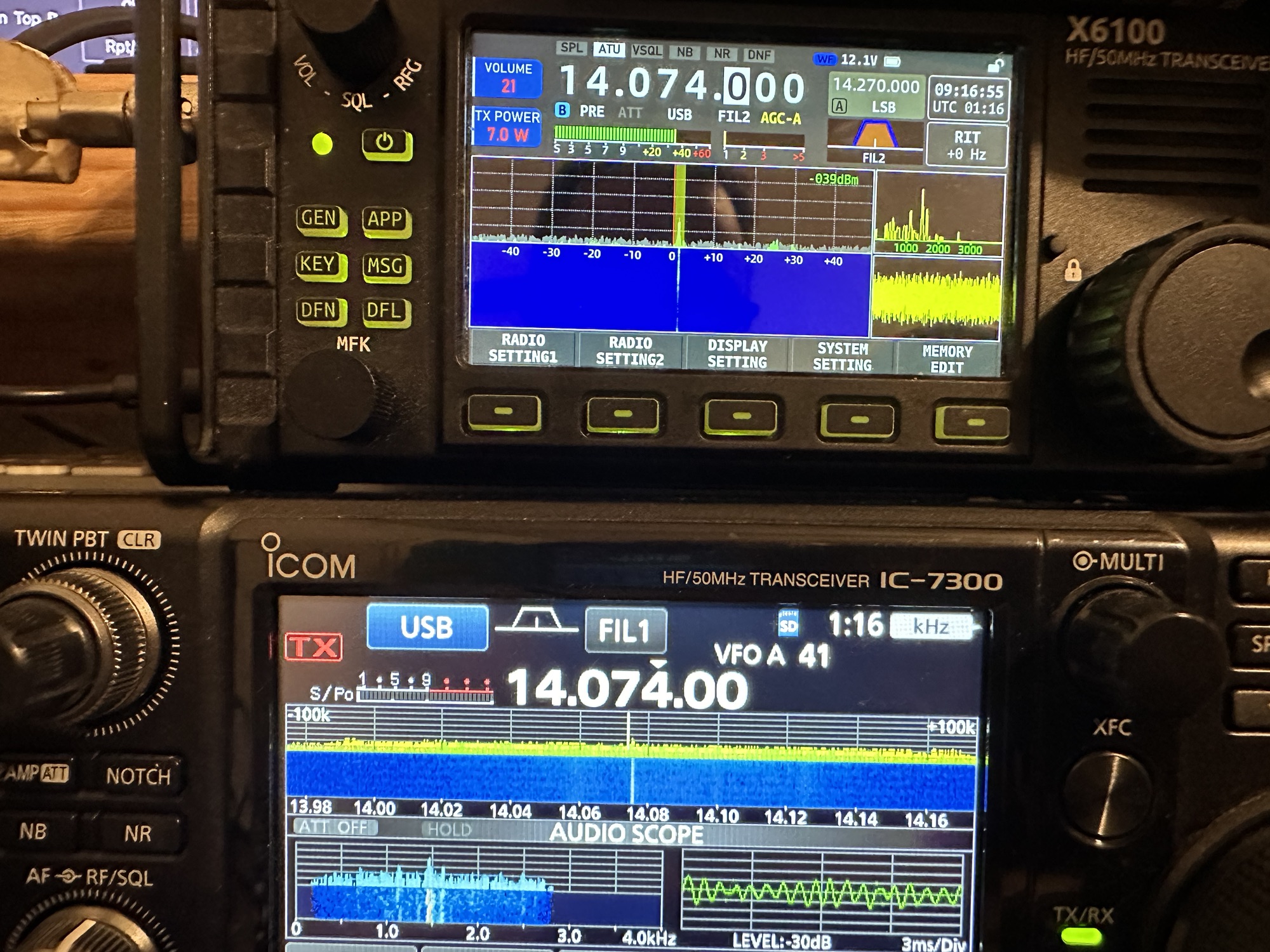I sold the Xiegu – turns out another ham was planning on a mountaintop DXpedition of sorts, so it worked out for both of us. I ended up picking up a sweet deal on an IC-705…. Figured it would solve the issues of audio when streaming, and maybe be a cleaner solution. Just my luck – I saw the exact same behavior- rx worked but no tx audio. I could not get the radio to transmit data from the network. I played with settings… no changes.
On a whim, I did some google searching for other virtual audio cables for the Mac, as I never did like the fact that VBCable gave me no connection configurations, and felt like a single pipe, rather than a bidirectional cable. I ended up finding this site: https://existential.audio/. Their product “Blackhole” was recommended for some other applications (audio mixers and whatnot), so I figured if the audio mixer types like it, it was worth a shot.
I installed it, switched WFview and WSJT to both use that virtual cable, and it worked – at least for tuning, which WSJT has not worked with using wireless or network connections to date (remember, we’re using SSB as a transmit mode, so even tuning requires an audio feed to modulate the signal and create a carrier). I suspected the rest will work too- but we had a thunderstorm so I needed to shut down for the night, but went to bed confident it would work.
I tested it the next morning, and I had transmit audio and modulation on FT8! I think this is definitely a viable solution for digital work. A couple of cleanup notes, though:
- VBCable can be uninstalled using the instructions here: https://remarkablemark.org/blog/2020/12/31/uninstall-vb-cable-mac/
- WFView audio settings for the network need to use either PortAudio or RTAudio. QTAudio did NOT work for some reason. I don’t know the differences, but I tried all three.
- TX and RX Codecs are LPCM in my case. Opus (a default?) did not work… something about UDP.. I saw an error, and switched them.

So as a wrap-up, WFView is acting as a HamLib server using the “RigCtld” option (I use port 4533), and WFView is using Rig “Hamlib NET rigctl” (network server localhost:4533), and both pieces of software use the “BlackHole 2Ch” audio device for both transmit and receive. I half wonder if the issue with VBCable is that it’s not set up as a pair of virtual cables, but just one buffer that both software devices couldn’t address correctly. not losing sleep over It, since this works. As a matter of fact, I switched over to FLDigi, and changed the audio device to BlackHole, and it immediately popped up with receive audio (it was trying to decode FT8 as CW… but the waterfall lit up!).
While my final work was with the 705, I truly suspect that the same issue (Virtual Audio cable not working) is what plagued the 6100 effort since I saw the same behavior on both radios. If you’re having the same audio issues, then BlackHole is definitely worth a shot if you’re trying to do all this in the Mac world.
Now that I got this working, I HAD been stressing a bit about the fact that I could have made the Xiegu work… but it DID have a few drawbacks.
- The stock firmware (latest and greatest) did not seem to like PSK2 wifi security. If I had an OPEN access point, it would work OK, but I did not plan on traveling with wifi routers and the like all the time.
- Bluetooth was VERY limited – It would not work for audio or rig control. I think it was only implemented for accessories like mice and keyboards.
- I didn’t see Xiegu putting much more into their firmware, since they had the X6200 on the horizon. I could have been wrong, but they seemed to drop the ball on some key features.
- R1CBU was doing the best he could on his end for firmware, but there were still SOME minor bugs to work out. I could have lived with these, if I had the connectivity I wanted (wifi or bluetooth). Things like an occasional dropout (disconnect and reconnect WFView would resolve), I could live with. this is all a HOBBY, so I don’t expect the reliability I demand at work.
And Don’t think ICOM got everything right, either! The 705 is physically larger, doesn’t include a tuner, and has a weird microphone connector arrangement. (OK, the last one was pretty minor – I would prefer if they had just put an RJ45 on there…). They DID get a lot of things right, but I’m not going to just put out another review like all the others…. go search YouTube, there’s enough out there already!
